I am trying to design a SEPIC converter with the parameters stated above and have already drawn a schematic using the LM5022 IC. I have built the system and noticed a few things:
- The output voltage is a stable 19.66 V with an open circuit load, but the duty cycle of the signal that drives the gate of the FET is really small (~10% or less), while the calculations predict a 40-60% duty cycle as the input varies. I assumed that this is due to the schematic being calculated for a 0.5 A output current, thus I tried to test the system with such load.
- Placing a 40 ohm load made the FET instantly burn (it is rated for 1.5 A. MOSFET Datasheet) and the coupled inductors get really hot (they are rated for 900 mA. CM Choke datasheet) In practice, I am using a common-mode choke for the build (which I could not show on the schematic). I measure drain-source voltage peaks that could potentially exceed the FET rating (100 V). The inductor current at loads of 500-1000 ohms looks like short bursts instead of continuous triangle waves as is expected.
I am not sure at this point what other information to include, so please ask me anything I have missed.
EDIT: I have done simulations of the practical condition where my FET burns, Here are the first 2 ms of the ltspice graphs (I could not simulate the controller, thus am using a PWM to control the converter):
!!!One point, which grabbed my attention, the simulations spazz out if the PWM is at 5 volts, anything higher works just fine!!!
FURTHER EDIT!!! I have just build the SEPIC from the simulations without a driver controller and used a fixed duty cycle PWM to control it. It works impeccably. I probed all of the nodes with an oscilloscope, everything is almost 100% like in the simulations, which leads me to believe that the controller is not designed/working properly. The one thing that I do not understand about it is the compensation network, thus have not calculated the values for that and have put ones from the datasheet. Could anyone suggest an idea about that? (Thank you all for the valuable support up until now ^^)
I apologize for the ugly circuit



